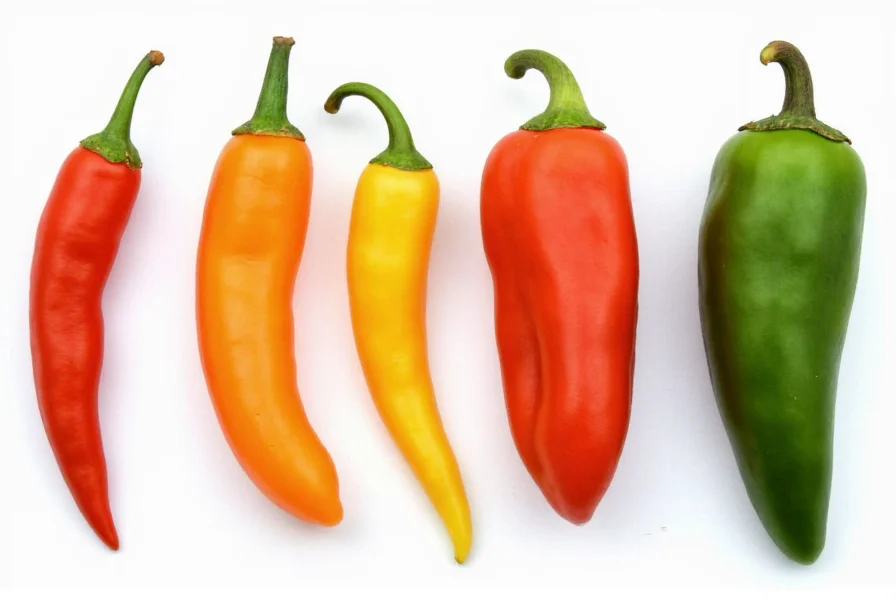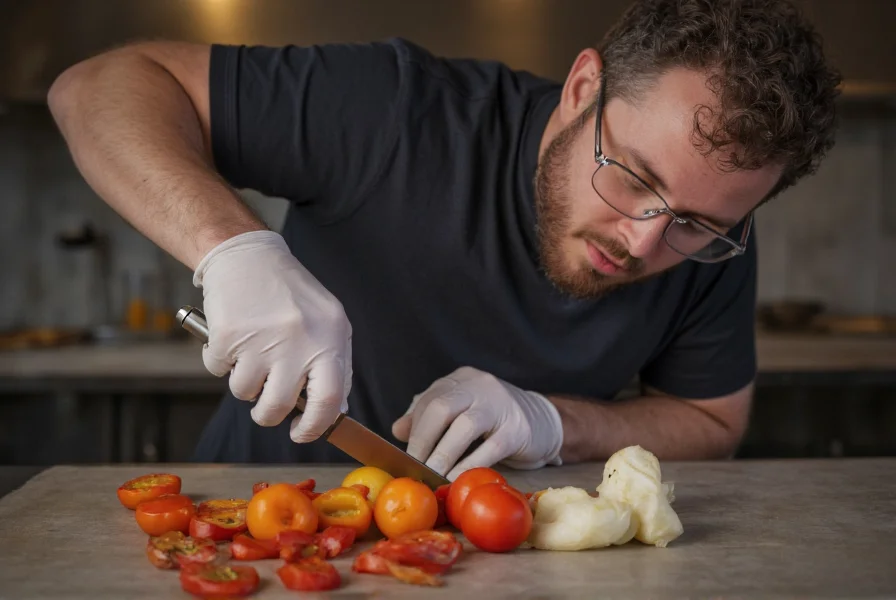The ghost pepper (Bhut Jolokia) measures between 855,000 and 1,041,427 Scoville Heat Units (SHU), placing it among the world's hottest chili peppers. This intense heat level makes ghost peppers approximately 200-400 times hotter than a standard jalapeño and about 6-12 times hotter than a habanero pepper.
When exploring how many scovilles is a ghost pepper, understanding the Scoville scale is essential for context. Developed by pharmacist Wilbur Scoville in 1912, this measurement quantifies capsaicin concentration—the compound responsible for chili pepper heat. The ghost pepper's position on this scale reveals why it earned the Guinness World Record for hottest chili pepper from 2007 to 2011.
Understanding Ghost Pepper Heat Variability
Ghost peppers don't have a single fixed Scoville rating but rather a significant range. This variation occurs due to several factors:
- Growing conditions - Soil composition, climate, and water availability dramatically affect capsaicin production
- Genetic variation - Different ghost pepper strains naturally produce varying heat levels
- Ripeness - Fully mature red ghost peppers typically reach higher heat levels than younger green varieties
- Plant stress - Mild environmental stress can increase capsaicin concentration as a defense mechanism
When discussing ghost pepper scoville units range, researchers at New Mexico State University's Chile Pepper Institute found that ghost peppers consistently test between 855,000-1,041,427 SHU in controlled laboratory conditions using high-performance liquid chromatography (HPLC), the modern standard for heat measurement.
Ghost Pepper Heat Comparison Chart
| Pepper Variety | Scoville Heat Units (SHU) | Heat Relative to Jalapeño |
|---|---|---|
| Ghost Pepper (Bhut Jolokia) | 855,000-1,041,427 | 200-400x hotter |
| Habanero | 100,000-350,000 | 20-40x hotter |
| Cayenne | 30,000-50,000 | 6-10x hotter |
| Jalapeño | 2,500-8,000 | Baseline |
| Bell Pepper | 0 | Not spicy |
This comparison clearly shows how hot is a ghost pepper compared to habanero varieties. While habaneros already deliver significant heat, ghost peppers operate in an entirely different intensity category.

Ghost Pepper Origins and Characteristics
Native to Northeast India (particularly Assam, Nagaland, and Manipur), ghost peppers (Bhut Jolokia, meaning "ghost chile" in Assamese) have been cultivated for centuries. The name reflects how the heat seemingly sneaks up on you before delivering an intense, lingering burn.
These peppers typically measure 2.4-2.8 inches long with a distinctive wrinkled, bumpy texture. Their color transitions from green to vibrant red as they mature. The heat profile features an initial fruity flavor followed by intense, long-lasting burning that can last 20-45 minutes.
Safety Considerations When Handling Ghost Peppers
Working with ghost peppers requires serious precautions due to their extreme heat level. When exploring ghost pepper scoville heat units, remember these safety tips:
- Always wear nitrile gloves when handling ghost peppers—latex won't protect against capsaicin
- Avoid touching your face, especially eyes, during and after handling
- Work in well-ventilated areas as capsaicin vapors can irritate respiratory passages
- Have dairy products (milk, yogurt) nearby to counteract the burn if needed
- Never use blenders or food processors without proper ventilation—capsaicin aerosolizes easily
Emergency responders sometimes use ghost pepper extract in riot control formulations due to its extreme potency, demonstrating why proper handling is crucial.

Practical Uses for Ghost Peppers
Despite their intense heat, ghost peppers have legitimate culinary applications when used properly:
- Small-batch hot sauces - A single pepper can flavor an entire bottle
- Spice rubs - Finely ground ghost pepper adds heat without overwhelming other flavors
- Chutneys and preserves - The fruitiness complements sweet preparations
- Infused oils and vinegars - Creates versatile heat sources for cooking
- Commercial food production - Used in minute quantities for extreme challenge products
Chefs working with ghost peppers typically use them in concentrations of 1/10 to 1/4 of what they'd use for habaneros. When experimenting with ghost pepper scoville measurement in recipes, always start with minuscule amounts and adjust carefully.
Ghost Pepper Heat in Context
Understanding ghost pepper heat scale positioning helps put its intensity in perspective:
- Police-grade pepper spray ranges from 500,000-2,000,000 SHU
- Pure capsaicin measures approximately 16,000,000 SHU
- Ghost peppers sit just below the threshold where capsaicin becomes dangerous to consume
- The human pain threshold for capsaicin is around 1,000,000 SHU for most people
Consuming a whole ghost pepper can cause severe discomfort including sweating, nausea, and temporary breathing difficulties. Medical professionals advise against eating ghost peppers raw without proper preparation and tolerance building.
Frequently Asked Questions
What is the exact scoville rating of a ghost pepper?
Ghost peppers measure between 855,000 and 1,041,427 Scoville Heat Units (SHU). This range represents laboratory measurements using high-performance liquid chromatography (HPLC), the modern standard for heat measurement. The exact rating varies based on growing conditions, plant genetics, and ripeness.
Is a ghost pepper hotter than a habanero?
Yes, ghost peppers are significantly hotter than habaneros. While habaneros range from 100,000-350,000 SHU, ghost peppers measure 855,000-1,041,427 SHU—making them approximately 6-12 times hotter. This substantial difference means ghost peppers deliver a much more intense and longer-lasting burn.
How does ghost pepper heat compare to other superhot peppers?
Ghost peppers were surpassed as the world's hottest by peppers like the Trinidad Moruga Scorpion (1,200,000-2,000,000 SHU) and Carolina Reaper (1,400,000-2,200,000 SHU). However, ghost peppers remain significantly hotter than most commercially available peppers and are still considered extremely hot by culinary standards.
Can eating a ghost pepper be dangerous?
While eating a ghost pepper isn't typically life-threatening for healthy adults, it can cause significant discomfort including severe burning sensation, sweating, nausea, and temporary breathing difficulties. People with certain medical conditions (like gastrointestinal issues) should avoid them. Consuming multiple ghost peppers or pure extracts can lead to more serious reactions requiring medical attention.
How can I reduce the burn from a ghost pepper?
Dairy products (milk, yogurt, sour cream) are most effective at neutralizing capsaicin burn due to casein proteins that break down capsaicin. Sugar or honey can help somewhat, but water is ineffective and may spread the burn. For skin exposure, rubbing alcohol or specialized capsaicin removal products work better than water. Always wear gloves when handling superhot peppers to prevent skin exposure.











 浙公网安备
33010002000092号
浙公网安备
33010002000092号 浙B2-20120091-4
浙B2-20120091-4